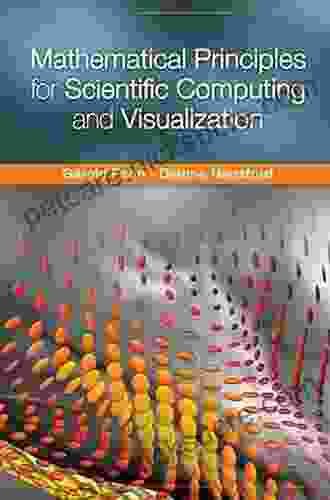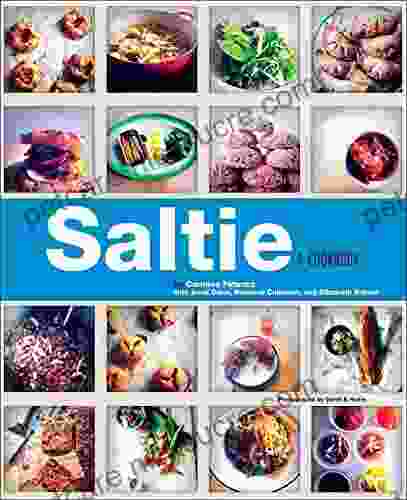Mathematical Principles for Scientific Computing and Visualization

5 out of 5
| Language | : | English |
| File size | : | 9301 KB |
| Print length | : | 275 pages |
In the realm of scientific research and data exploration, mathematical principles play a pivotal role in transforming raw data into meaningful insights and visually compelling representations. Scientific computing and visualization, as specialized fields, leverage these mathematical foundations to empower scientists and researchers in extracting knowledge from complex data.
Numerical Methods: The Cornerstone of Simulations
Numerical methods are the backbone of scientific computing. They provide a means to approximate solutions to complex mathematical problems that may not have analytical solutions. These methods involve breaking down problems into smaller, manageable steps and using iterative techniques to converge towards an approximate solution.
Finite Difference Methods
Finite difference methods approximate the derivatives of a function by using differences between its values at discrete points. These methods are commonly employed in solving partial differential equations that govern physical phenomena.
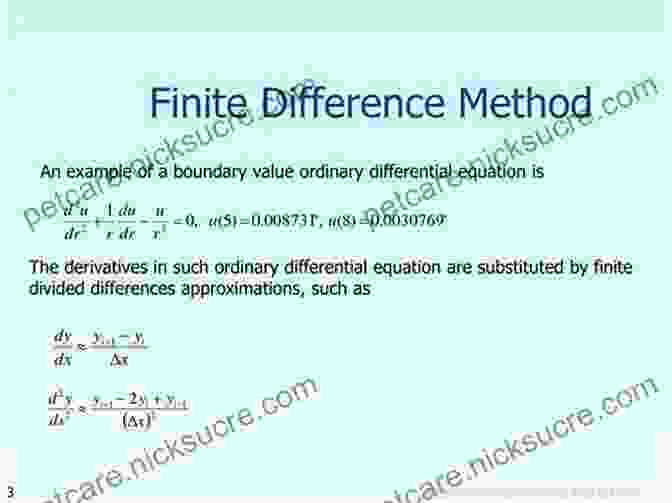
Finite Element Methods
Finite element methods divide a domain into smaller elements and approximate the solution within each element using a simple function. These methods excel in handling complex geometries and boundary conditions.
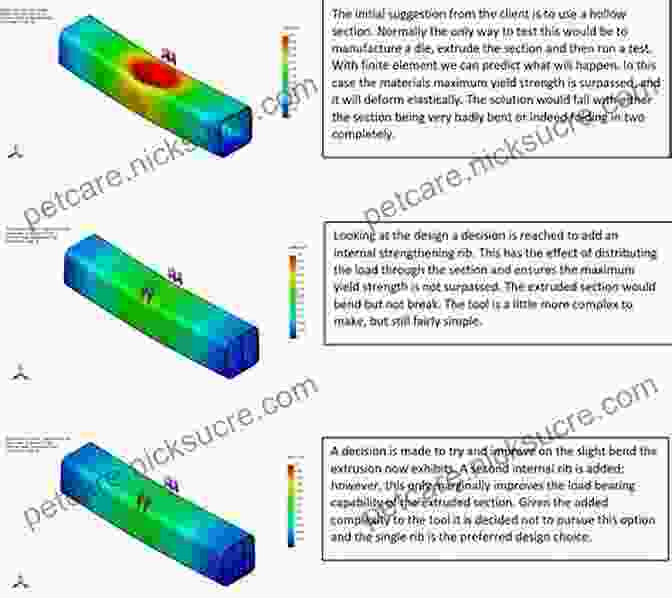
Linear Algebra: The Language of Data
Linear algebra provides a mathematical framework for representing and manipulating data in a structured and efficient manner. It empowers scientific computing and visualization by enabling the analysis of large datasets, solving systems of equations, and performing transformations.
Matrix Operations
Matrices, rectangular arrays of numbers, are fundamental in scientific computing. Matrix operations, such as multiplication, inversion, and decomposition, allow for efficient manipulation and analysis of complex data.
Eigenvalues and Eigenvectors
Eigenvalues and eigenvectors are special values and vectors associated with matrices. They provide insights into the behavior of data and are used in various applications, including principal component analysis and dimensionality reduction.
Differential Equations: Modeling Dynamic Systems
Differential equations describe how a system changes over time. They are essential for modeling physical phenomena, such as fluid flow, heat transfer, and chemical reactions.
Ordinary Differential Equations (ODEs)
ODEs involve derivatives with respect to a single independent variable, typically time. They are used to model systems that evolve continuously, such as the motion of a particle or the decay of a radioactive substance.
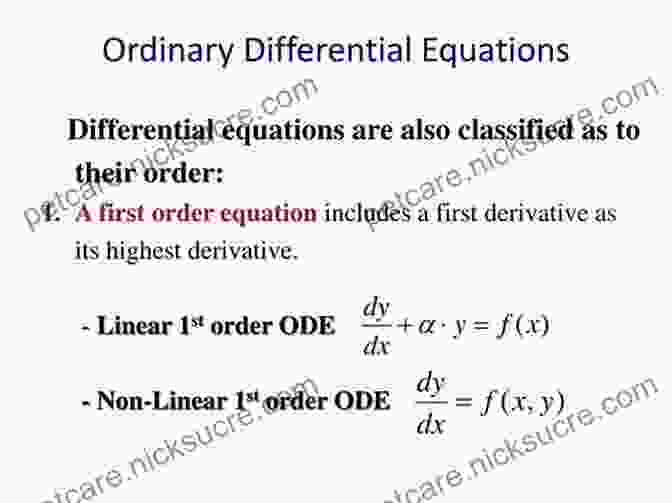
Partial Differential Equations (PDEs)
PDEs involve derivatives with respect to multiple independent variables, typically space and time. They are used to model systems that vary continuously in space, such as the flow of fluid or the propagation of waves.
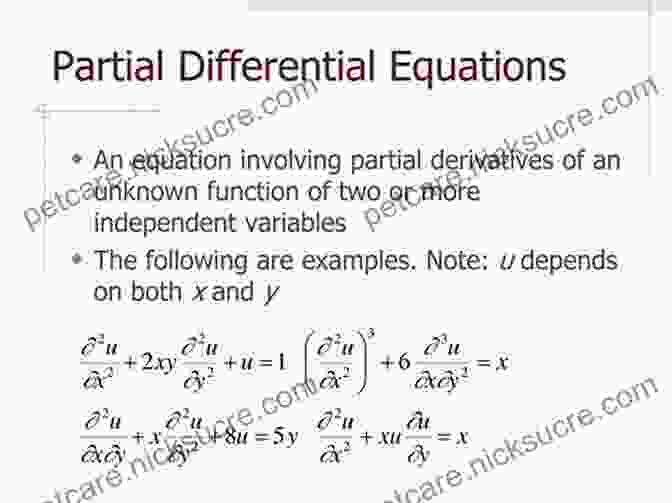
Visualization: Making Data Visible
Visualization techniques transform complex data into graphical representations, making them easier to understand and interpret. Scientific visualization plays a crucial role in scientific computing by providing insights into data patterns, relationships, and trends.
Scientific Visualization Techniques
A wide range of scientific visualization techniques exist, each tailored to specific types of data and applications. These techniques include:
- Scatterplots
- Line charts
- Bar charts
- Histograms
- 3D surface plots
- Volume rendering
Visual Data Analysis
Visual data analysis involves using visualization techniques to identify patterns, trends, and outliers in data. This process helps researchers and scientists extract meaningful insights and make informed decisions.
Mathematical principles are the bedrock of scientific computing and visualization. They empower researchers and scientists to analyze complex data, solve challenging problems, and visualize their findings in visually compelling ways. From numerical methods to linear algebra, differential equations to visualization techniques, these principles provide a comprehensive framework for transforming raw data into actionable knowledge.
5 out of 5
| Language | : | English |
| File size | : | 9301 KB |
| Print length | : | 275 pages |
Do you want to contribute by writing guest posts on this blog?
Please contact us and send us a resume of previous articles that you have written.
 Fiction
Fiction Non Fiction
Non Fiction Romance
Romance Mystery
Mystery Thriller
Thriller SciFi
SciFi Fantasy
Fantasy Horror
Horror Biography
Biography Selfhelp
Selfhelp Business
Business History
History Classics
Classics Poetry
Poetry Childrens
Childrens Young Adult
Young Adult Educational
Educational Cooking
Cooking Travel
Travel Lifestyle
Lifestyle Spirituality
Spirituality Health
Health Fitness
Fitness Technology
Technology Science
Science Arts
Arts Crafts
Crafts DIY
DIY Gardening
Gardening Petcare
Petcare Keith Bowden
Keith Bowden Aaron T Beck
Aaron T Beck Cal Peternell
Cal Peternell Daniel L Schacter
Daniel L Schacter Will Nett
Will Nett Joachim Rossberg
Joachim Rossberg Janet Godwin
Janet Godwin Neil Sagebiel
Neil Sagebiel Harvey Penick
Harvey Penick Chris J Ellis
Chris J Ellis Sally A Lipsky
Sally A Lipsky Denis Dwyer
Denis Dwyer Janice Hudson
Janice Hudson Andrea Sfiligoi
Andrea Sfiligoi Lori Bregman
Lori Bregman Randall M Packard
Randall M Packard Kev Reynolds
Kev Reynolds Michael Borenstein
Michael Borenstein Fern Nichols
Fern Nichols Daniel Todd Gilbert
Daniel Todd Gilbert Bud Hasert
Bud Hasert R K Agarwal
R K Agarwal Ivor Horton
Ivor Horton Mark Vee John
Mark Vee John Edward A Bell
Edward A Bell Robin Hobb
Robin Hobb Tamonya Sands
Tamonya Sands Daisaku Ikeda
Daisaku Ikeda Shane Benzie
Shane Benzie David Roberts
David Roberts Joan Ryan
Joan Ryan Bilingual Edition Kindle Edition
Bilingual Edition Kindle Edition Jacob Gardner
Jacob Gardner Norman Delgado
Norman Delgado Mike Barrett
Mike Barrett Helen Batten
Helen Batten Belinia Xenrale
Belinia Xenrale Manjit Kumar
Manjit Kumar Mark Santino
Mark Santino Alison Gopnik
Alison Gopnik Ronald York
Ronald York David I Spivak
David I Spivak Lawrence T Friedhoff
Lawrence T Friedhoff Jacob Stegenga
Jacob Stegenga Mark Lattanzi
Mark Lattanzi Terry Pratchett
Terry Pratchett Lars Anderson
Lars Anderson Lani Forbes
Lani Forbes Stephen Bodio
Stephen Bodio Karl Rehn
Karl Rehn Jamie Dorobek
Jamie Dorobek Helen Garabedian
Helen Garabedian Jonathan Tarbox
Jonathan Tarbox Geraint Thomas
Geraint Thomas Michael Clarke
Michael Clarke Kara Goucher
Kara Goucher Jill Heinerth
Jill Heinerth Jacqueline Carey
Jacqueline Carey Joshua Darwin
Joshua Darwin Intelligent
Intelligent Natalia Molina
Natalia Molina Jacob Cohen
Jacob Cohen Grace Liu
Grace Liu Jeanne Oliver
Jeanne Oliver Judith Warner
Judith Warner Gail Buckland
Gail Buckland Taylor Fontenot
Taylor Fontenot Michael Archer
Michael Archer Desiree Trattles
Desiree Trattles Adeline Yen Mah
Adeline Yen Mah Matthew Dworak
Matthew Dworak Hafsah Faizal
Hafsah Faizal Joshua G Shifrin
Joshua G Shifrin Sarah Lawton
Sarah Lawton Sarah Thompson
Sarah Thompson Doug Degrood
Doug Degrood Ashlee Kasten
Ashlee Kasten Alexandre Paiva
Alexandre Paiva Forrest Willett
Forrest Willett Pete Magill
Pete Magill Robyn Hawkins
Robyn Hawkins Elizabeth Field
Elizabeth Field Michael T Mcdermott
Michael T Mcdermott Rebekah Dodson
Rebekah Dodson Yaron Seidman
Yaron Seidman Leonard Sax
Leonard Sax Mayim Bialik
Mayim Bialik Stephen R Lawhead
Stephen R Lawhead Robert Lanza
Robert Lanza Disha Experts
Disha Experts Cathy Hester Seckman
Cathy Hester Seckman Clifford E Trafzer
Clifford E Trafzer Irene Spencer
Irene Spencer Fletcher Dunn
Fletcher Dunn Julie K Briggs
Julie K Briggs Jeffrey S Saltz
Jeffrey S Saltz Paul Haddad
Paul Haddad Diane Vaughan
Diane Vaughan Mara Rutherford
Mara Rutherford David Faulkner
David Faulkner Julie Angus
Julie Angus Geoff Johns
Geoff Johns Ron Larson
Ron Larson Shalini Shankar
Shalini Shankar Gary E Schwartz
Gary E Schwartz Valerie Nash Chang
Valerie Nash Chang David Barrett
David Barrett Joshua James
Joshua James Edward Marston
Edward Marston Ric Conrad
Ric Conrad Rachel Reed
Rachel Reed Kay Kennedy
Kay Kennedy Robert Oerter
Robert Oerter Tom Chivers
Tom Chivers Morten H Christiansen
Morten H Christiansen Vikas Bhushan
Vikas Bhushan Brent Warner
Brent Warner Frank Wilczek
Frank Wilczek My Daily German
My Daily German Lynne Tolley
Lynne Tolley Megan Sloan
Megan Sloan Charlotte Eliopoulos
Charlotte Eliopoulos Ruth Ware
Ruth Ware Wabun Wind
Wabun Wind Louise Warneford
Louise Warneford Maureen Dempsey
Maureen Dempsey Os Guinness
Os Guinness Karen Kovacs
Karen Kovacs Robyn Ryle
Robyn Ryle Linda L French
Linda L French Raven Morgaine
Raven Morgaine Bruce Chatwin
Bruce Chatwin R J Vickers
R J Vickers Mildred Council
Mildred Council John T Cacioppo
John T Cacioppo Adam Cesare
Adam Cesare Zachary Willey
Zachary Willey Rafael Nadal
Rafael Nadal Ann Jackson
Ann Jackson Karina Manta
Karina Manta James Proctor
James Proctor Chad Waterbury
Chad Waterbury Michael Schiavone
Michael Schiavone Stanley Vast
Stanley Vast Deborah T Goldberg
Deborah T Goldberg Lavinia Collins
Lavinia Collins Dorthe Berntsen
Dorthe Berntsen Hana Ali
Hana Ali Karen L Cox
Karen L Cox Tillie Cole
Tillie Cole Egerton Ryerson Young
Egerton Ryerson Young Daniel Scott
Daniel Scott Monica Beyer
Monica Beyer Michael Ross
Michael Ross Kristen Thrasher
Kristen Thrasher Jacqueline Corricelli
Jacqueline Corricelli Dk Publishing
Dk Publishing David Fine
David Fine 1st Ed 2020 Edition Kindle Edition
1st Ed 2020 Edition Kindle Edition Nageshwar Sah
Nageshwar Sah Ian Stewart
Ian Stewart Graham Priest
Graham Priest Jandy Nelson
Jandy Nelson Knowledge Tree
Knowledge Tree Amita Jassi
Amita Jassi Paul Freedman
Paul Freedman Dan Robson
Dan Robson Elaine Heney
Elaine Heney Carol Lynn Mckibben
Carol Lynn Mckibben Guy Harrison
Guy Harrison Felicity Cloake
Felicity Cloake Arden Rose
Arden Rose Chris Stringer
Chris Stringer Janet Malcolm
Janet Malcolm Hesam Nemounehkhah
Hesam Nemounehkhah Robert Clifton Robinson
Robert Clifton Robinson Stacey Steinberg
Stacey Steinberg 1st Ed 2019 Edition Kindle Edition
1st Ed 2019 Edition Kindle Edition Sara Snow
Sara Snow Mae Ilami Onyekwum
Mae Ilami Onyekwum Diane H Tracey
Diane H Tracey S Elia
S Elia Lh Press
Lh Press Gerd Gigerenzer
Gerd Gigerenzer 6th Edition Kindle Edition
6th Edition Kindle Edition Mary Douglas
Mary Douglas Erin Miller
Erin Miller Alice Waters
Alice Waters Teddy Atlas
Teddy Atlas 1st Ed 2018 Edition Kindle Edition
1st Ed 2018 Edition Kindle Edition Alexandra Witze
Alexandra Witze Vaclav Smil
Vaclav Smil Sharon Wilkins
Sharon Wilkins Rana Conway
Rana Conway Larry A Yff
Larry A Yff Alan Greenfield
Alan Greenfield Alex Hibbert
Alex Hibbert Editions La Plume D Eros
Editions La Plume D Eros Loudell F Snow
Loudell F Snow Dinah Bucholz
Dinah Bucholz Ben Rothenberg
Ben Rothenberg Jeremy Bhandari
Jeremy Bhandari Robert Lomas
Robert Lomas Wendy Sullivan
Wendy Sullivan Richard Hofstadter
Richard Hofstadter Mike Bender
Mike Bender Didier Reiss
Didier Reiss Shane Jones
Shane Jones Jeff Benedict
Jeff Benedict Sean Fitz Gerald
Sean Fitz Gerald Jane Yeadon
Jane Yeadon Marisa Kanter
Marisa Kanter Bill Rodgers
Bill Rodgers Joyce L Vedral
Joyce L Vedral Peter Heller
Peter Heller Susan Ludington Hoe
Susan Ludington Hoe John L Havlin
John L Havlin Ukay J Ekong
Ukay J Ekong T M Mikita
T M Mikita Broccoli Lion
Broccoli Lion Nancy B Rapoport
Nancy B Rapoport Michelle Damiani
Michelle Damiani Janice K Ledford
Janice K Ledford Alison Pray
Alison Pray Robyn Perry Worthington
Robyn Perry Worthington Ivana Bajic Hajdukovic
Ivana Bajic Hajdukovic Dierdre Wolownick Honnold
Dierdre Wolownick Honnold Derek Rowntree
Derek Rowntree Ann Olga Koloski Ostrow
Ann Olga Koloski Ostrow Carola Hein
Carola Hein John Small
John Small Philip Moore
Philip Moore The Lodge Company
The Lodge Company Tyler Lansford
Tyler Lansford Andrea Olson
Andrea Olson Timothy Dickeson
Timothy Dickeson 1st Edition Kindle Edition
1st Edition Kindle Edition R I Chalmers
R I Chalmers Amanda Claridge
Amanda Claridge Karyn Garvin
Karyn Garvin Elizabeth Becker
Elizabeth Becker Andrew Solomon
Andrew Solomon J F Tamayo
J F Tamayo Lindsey Bliss
Lindsey Bliss Gary M Schultheis
Gary M Schultheis Eric Sevareid
Eric Sevareid Mark Seidenberg
Mark Seidenberg Piotr Naskrecki
Piotr Naskrecki Gill Stewart
Gill Stewart Deborah Spungen
Deborah Spungen David Kahn
David Kahn Laura Prepon
Laura Prepon Anne Polli
Anne Polli Ian Sample
Ian Sample Paul Gaskell
Paul Gaskell Paul Johnson
Paul Johnson Robert Milner
Robert Milner 15th Edition Kindle Edition
15th Edition Kindle Edition Amanda Brooks
Amanda Brooks Florence Nightingale
Florence Nightingale Wendy Higgins
Wendy Higgins Nicole Zasowski
Nicole Zasowski Chip Ingram
Chip Ingram Cathy Raubenheimer
Cathy Raubenheimer Evy Poumpouras
Evy Poumpouras Susan Alcorn
Susan Alcorn Latham Thomas
Latham Thomas Matthew B Crawford
Matthew B Crawford Bradmd
Bradmd Botros Rizk
Botros Rizk S K Gupta
S K Gupta Mike Lanza
Mike Lanza Sanjay Sarma
Sanjay Sarma Daniel H Pink
Daniel H Pink Skylar Kergil
Skylar Kergil Tim Deroche
Tim Deroche Kyler Shumway
Kyler Shumway Launi Meili
Launi Meili William E Glassley
William E Glassley David Weber
David Weber Dylan Dethier
Dylan Dethier Guillermo Gonzalez
Guillermo Gonzalez Alan Agresti
Alan Agresti Peter Hessler
Peter Hessler Elizabeth Heavey
Elizabeth Heavey Peter Burns
Peter Burns Alexandra Kenin
Alexandra Kenin House Of Talent
House Of Talent Katie Singer
Katie Singer Lech A Grzelak
Lech A Grzelak Nicole Libin Phd
Nicole Libin Phd Andrew Evans
Andrew Evans John Vigor
John Vigor Jonathan Vaughters
Jonathan Vaughters Brad Myers
Brad Myers Kathy Farrokhzad
Kathy Farrokhzad Anthony Burgess
Anthony Burgess Kim Mack Rosenberg
Kim Mack Rosenberg David Clark
David Clark Leona S Aiken
Leona S Aiken Emily Chetkowski
Emily Chetkowski Eryk Lewinson
Eryk Lewinson Pam Vredevelt
Pam Vredevelt Jason Sumner
Jason Sumner Ashley Stanford
Ashley Stanford Jesse M Ehrenfeld
Jesse M Ehrenfeld Wolfgang Jank
Wolfgang Jank Richard E Nisbett
Richard E Nisbett Jean Pierre De Caussade
Jean Pierre De Caussade Jareth Tempest
Jareth Tempest Leslie Anthony
Leslie Anthony Otto Toeplitz
Otto Toeplitz Sophie Kinsella
Sophie Kinsella D James Benton
D James Benton Pam Jarvis
Pam Jarvis Elise Hennessy
Elise Hennessy Six Sisters Stuff
Six Sisters Stuff Saroo Brierley
Saroo Brierley Nathan D Lang Raad
Nathan D Lang Raad H Lee Jones
H Lee Jones Arny Alberts
Arny Alberts Steve Garratt
Steve Garratt Jack Newfield
Jack Newfield Estelle Maskame
Estelle Maskame Nick Redfern
Nick Redfern Michele Smith
Michele Smith Anton Angelov
Anton Angelov Timothy R Pauketat
Timothy R Pauketat Alan Naldrett
Alan Naldrett Raichelle Carter
Raichelle Carter Felicia Pizzonia
Felicia Pizzonia Kaoru Sinozaki
Kaoru Sinozaki Larry Kaniut
Larry Kaniut Lisa R Cohen
Lisa R Cohen Isa Herrera
Isa Herrera Paul Annacone
Paul Annacone Michael R Canfield
Michael R Canfield Lenora Chu
Lenora Chu Kajal Gupta
Kajal Gupta Christine E Sleeter
Christine E Sleeter Claire Dunn
Claire Dunn Sandra Uwiringiyimana
Sandra Uwiringiyimana Keshia A Case
Keshia A Case Christopher Carter
Christopher Carter Tim Hollister
Tim Hollister Laura Luther
Laura Luther Julia Rutland
Julia Rutland Carmen Acevedo Butcher
Carmen Acevedo Butcher Nancy Hendrickson
Nancy Hendrickson Dana Trentini
Dana Trentini Monte Burch
Monte Burch Raymond Arsenault
Raymond Arsenault Richard Pears
Richard Pears Berkshire K Greene
Berkshire K Greene M L Buchman
M L Buchman Seth Tucker
Seth Tucker Jo Bartlett
Jo Bartlett Andy Kirkpatrick
Andy Kirkpatrick Stephen C Meyer
Stephen C Meyer Barry Ord Clarke
Barry Ord Clarke Hannu Rajaniemi
Hannu Rajaniemi Diana Papaioannou
Diana Papaioannou Christopher Hook
Christopher Hook Roger Frampton
Roger Frampton Craig Clapper
Craig Clapper Mark Miller
Mark Miller Naomi Moriyama
Naomi Moriyama Ellie Marney
Ellie Marney Clark A Campbell
Clark A Campbell Holly Hook
Holly Hook 1st Ed 2021 Edition Kindle Edition
1st Ed 2021 Edition Kindle Edition Matthew Harffy
Matthew Harffy Patricia B Mcconnell
Patricia B Mcconnell Taran Matharu
Taran Matharu Bryn Huntpalmer
Bryn Huntpalmer Samantha Boardman
Samantha Boardman Jeremy Lent
Jeremy Lent Bob Allcorn
Bob Allcorn Alice Roberts
Alice Roberts Kiley Reid
Kiley Reid John S Farnam
John S Farnam Anthony Haynes
Anthony Haynes Bill Douglas
Bill Douglas Jean Yves Leloup
Jean Yves Leloup Rebecca Solnit
Rebecca Solnit Carol Matsuzaki
Carol Matsuzaki Kim Dwinell
Kim Dwinell Jody Morse
Jody Morse Bob Chandler
Bob Chandler Chris Parsons
Chris Parsons Robert Irwin
Robert Irwin Gerald Beaudry
Gerald Beaudry Christian Straube
Christian Straube James Adams
James Adams Tadahiko Mizuno
Tadahiko Mizuno Christa Mackinnon
Christa Mackinnon Charles Fleming
Charles Fleming Webb Chiles
Webb Chiles Patricia G Lange
Patricia G Lange M Susan Lindee
M Susan Lindee Bruce Brown
Bruce Brown Phil Mickelson
Phil Mickelson Teri Tom
Teri Tom Christian Fader
Christian Fader Rosemary Ellen Guiley
Rosemary Ellen Guiley Dr Mike Grevlos
Dr Mike Grevlos Sarah A Clark
Sarah A Clark Jay Carter
Jay Carter Heather A Smith
Heather A Smith Glenda Green
Glenda Green Erfun Geula
Erfun Geula 1st Ed 2016 Edition Kindle Edition
1st Ed 2016 Edition Kindle Edition Franz Boas
Franz Boas Nicholas J Saunders
Nicholas J Saunders Philippa Langley
Philippa Langley Emily Vikre
Emily Vikre Evelyn Raab
Evelyn Raab Ewan Mcgregor
Ewan Mcgregor Jamil Zaki
Jamil Zaki Gary Dierking
Gary Dierking Rachael Bell Irving
Rachael Bell Irving Ejike Ifeanyichukwu
Ejike Ifeanyichukwu Joseph Mercola
Joseph Mercola Natsuki Takaya
Natsuki Takaya Amanda Kingloff
Amanda Kingloff Samuel Owedyk
Samuel Owedyk Adam Rutherford Phd
Adam Rutherford Phd Larry Krieger
Larry Krieger Beryl Beare
Beryl Beare Geoff Powter
Geoff Powter Philip Coppens
Philip Coppens Ray Mcnulty
Ray Mcnulty Derald Wing Sue
Derald Wing Sue Tim Powers
Tim Powers Aron Ralston
Aron Ralston Brian Meier
Brian Meier Caroline Fidanza
Caroline Fidanza Jerome Rand
Jerome Rand Day Schildkret
Day Schildkret Mindfulness Hypnosis Academy
Mindfulness Hypnosis Academy Jay Cassell
Jay Cassell Thomas Lickona
Thomas Lickona Peter Lightbown
Peter Lightbown Jim Baggott
Jim Baggott Nick Morrison
Nick Morrison Duncan Hamilton
Duncan Hamilton Burt L Standish
Burt L Standish Pat Manley
Pat Manley John Toussaint
John Toussaint Suzy Hopkins
Suzy Hopkins Brent E Turvey
Brent E Turvey Joanne Calderwood
Joanne Calderwood Lei Wang
Lei Wang Irina Szmelskyj
Irina Szmelskyj Maia Motley
Maia Motley Paul A Laviolette
Paul A Laviolette Livy
Livy Francis L Macrina
Francis L Macrina Rollo Tomassi
Rollo Tomassi Jamie Whyte
Jamie Whyte Liz Thomas
Liz Thomas James M Tabor
James M Tabor Ben Coates
Ben Coates Spire Study System
Spire Study System Lou Nanne
Lou Nanne Mambo Chita Tann
Mambo Chita Tann Travis Senzaki
Travis Senzaki Leonie Mack
Leonie Mack Jon Young
Jon Young Ali Psiuk
Ali Psiuk Modestus Anabaraonye
Modestus Anabaraonye Scott Matthews
Scott Matthews Kathleen Buckstaff
Kathleen Buckstaff Rick Barba
Rick Barba Sharon Copeland
Sharon Copeland David Wolff
David Wolff Harry Fisch
Harry Fisch 1st Ed 2017 Edition Kindle Edition
1st Ed 2017 Edition Kindle Edition Robert Chu
Robert Chu Lisa Marasco
Lisa Marasco Brian Fagan
Brian Fagan Orji Onyebuchi
Orji Onyebuchi Darril Fosty
Darril Fosty Sarah A Reinhard
Sarah A Reinhard James Ragonnet
James Ragonnet Perre Coleman Magness
Perre Coleman Magness Russ Moorhouse
Russ Moorhouse Xiufeng Liu
Xiufeng Liu Sara Saedi
Sara Saedi Harold Simmons
Harold Simmons Steve Crawford
Steve Crawford Traci Chee
Traci Chee Phyllis Franklin
Phyllis Franklin Mike Chappell
Mike Chappell Asti Hustvedt
Asti Hustvedt Marva Collins
Marva Collins George Grimm
George Grimm George Mount
George Mount
Light bulbAdvertise smarter! Our strategic ad space ensures maximum exposure. Reserve your spot today!
 Frank ButlerFollow ·18.2k
Frank ButlerFollow ·18.2k Chad PriceFollow ·4.4k
Chad PriceFollow ·4.4k Gordon CoxFollow ·14.1k
Gordon CoxFollow ·14.1k Isaac BellFollow ·7.4k
Isaac BellFollow ·7.4k Gabriel Garcia MarquezFollow ·7.6k
Gabriel Garcia MarquezFollow ·7.6k Pablo NerudaFollow ·8.4k
Pablo NerudaFollow ·8.4k Jon ReedFollow ·18.5k
Jon ReedFollow ·18.5k Russell MitchellFollow ·7.6k
Russell MitchellFollow ·7.6k

 Marcus Bell
Marcus BellThe Essential Guide to Angler Quick Reference: Your...
Embark on an unforgettable...

 Juan Butler
Juan ButlerThe Lupatus Stone: A Wicked Conjuring
The Lupatus Stone is a...

 Alvin Bell
Alvin BellUnveiling the Enchanting Memoirs of Lady Hyegyong: A...
In the annals of Korean...

 DeShawn Powell
DeShawn PowellAMC's Best Day Hikes in the Berkshires: Explore Majestic...
The Berkshires, a...

 Clark Campbell
Clark CampbellRewilding The Urban Soul: Reconnecting with Nature in the...
In the heart of sprawling metropolises, where...

 Cruz Simmons
Cruz SimmonsHow to Find Your Family History on a Genealogy Website: A...
Delving into the...
5 out of 5
| Language | : | English |
| File size | : | 9301 KB |
| Print length | : | 275 pages |


